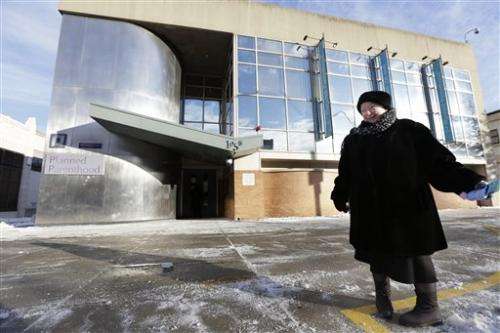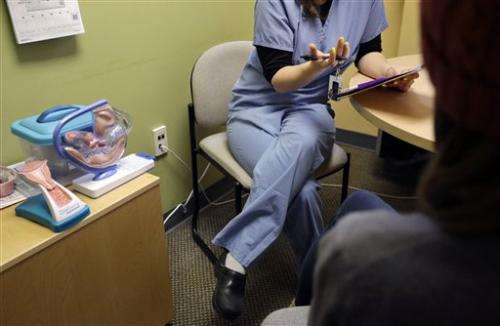US justices doubtful on abortion buffer zone law

The U.S. Supreme Court seemed likely Wednesday to strike down a state of Massachusetts law setting a 35-foot (10 meter) protest-free zone outside abortion clinics.
Liberal and conservative justices alike expressed misgivings about the law during arguments at the high court. They questioned the size of the zone and whether the state could find less restrictive ways of ensuring patient access and safety.
No one has been prosecuted under the 2007 law, which state officials and clinic employees have said has resulted in less congestion outside the clinics.
The court—which bars protests on its plaza, but allows them on the public sidewalks—last considered abortion clinic protest zones in 2000, when it upheld a state of Colorado law.
It seemed possible that there could be more than the five votes needed to strike down the law after Justice Elena Kagan said she was "hung up" over the size of the zone.
But it was hard to tell whether the court might also upend its 2000 ruling in support of the Colorado zone, which has been criticized by free speech advocates for unfairly restricting protesters' rights.
That's because Chief Justice John Roberts, normally an active questioner, did not ask a single question of any of the three lawyers who argued the case.
Painted semicircles outside Planned Parenthood clinics in Boston, Springfield and Worcester mark the spot beyond which abortion opponents are free to protest and try to persuade women not to end their pregnancies. Inside the line, protesters and supporters alike risk arrest.

Eleanor McCullen, 77, and other protesters at those clinics sued the state over its 2007 law setting up the buffer zone, saying it limits their ability to encounter patients arriving for care. Federal courts in Massachusetts have upheld the law as a reasonable imposition on protesters' rights.
Mark Rienzi, representing the protesters, said the state could deal with congestion problems by asking people to move, "not dragging Mrs. McCullen off to prison."
Lawyers for Massachusetts and the Obama administration defended the law as a reasonable effort that still allows people to attempt to persuade women arriving at the clinics not to have abortions.
State officials and clinic employees say patients and staff feel safer and find it easier to enter the clinics. Abortion rights groups report that incidents of violence are down in states and cities that have buffer zones. The last serious violence in Massachusetts was in 1994, when a gunman killed two employees at two clinics in the Boston area.
In 2000, the Supreme Court voted 6-3 to uphold a different buffer zone in Colorado in a decision that some free-speech advocates, who also support abortion rights, have criticized.
Since then, four of the six justices in the majority have retired, while the three dissenters remain on the court. Two of the four newer justices are Roberts and Justice Samuel Alito, who both have voted to restrict abortion rights. Roberts also has written strong opinions in favor of protesters' rights, including members of a Kansas church who protest outside military funerals. Alito has been more willing to limit those rights.
But Alito appeared certain to vote to strike down the law, which he said treats people differently based on their point of view.
Assistant Attorney General Jennifer Grace Miller of Massachusetts failed to dissuade Alito that the issue was not what anyone was saying, but the state's desire to keep traffic moving in front of the clinic.
© 2014 The Associated Press. All rights reserved.

















